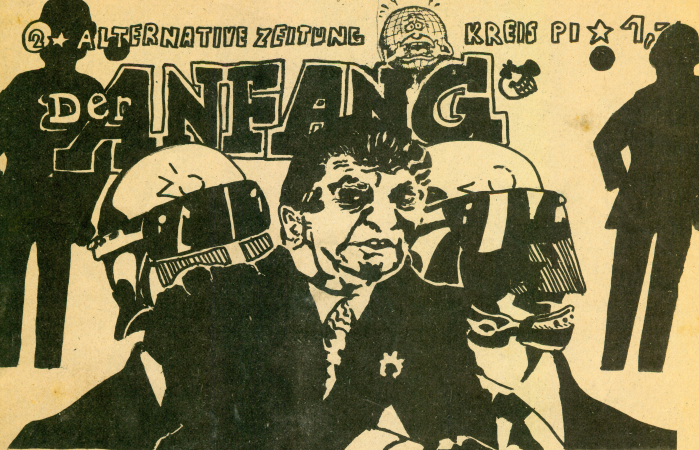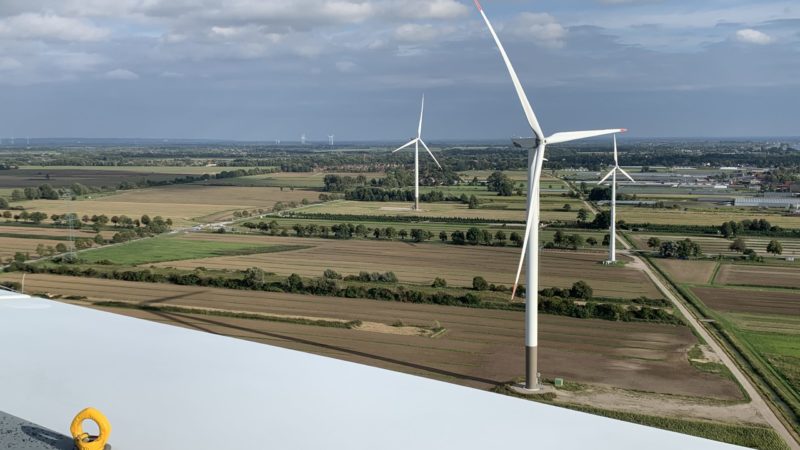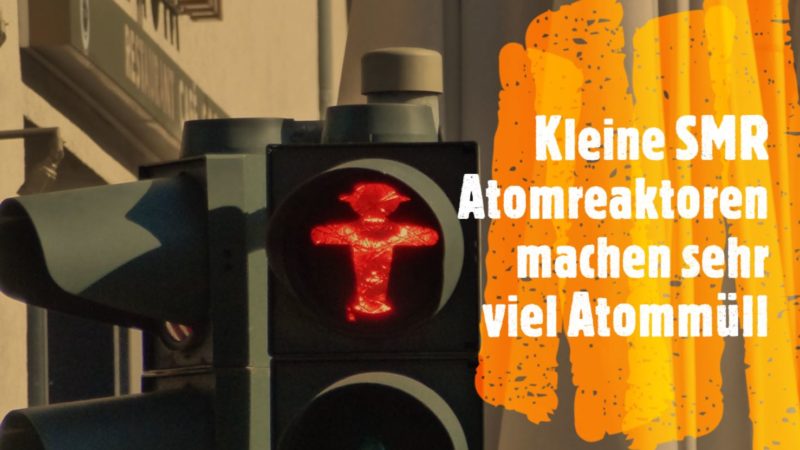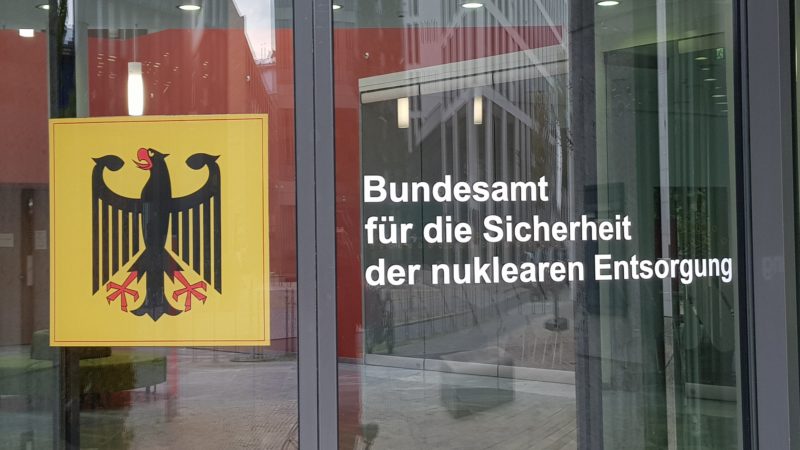Atommüll regieren mit Konflikt, Beteiligung und Akzeptanz: ENTRIA-Konferenz über Governing Nuclear Waste
(See below english version) Organisiert vom Forschungszentrum für Umweltpolitik der FU Berlin unter dem Dach von ENTRIA, dem sozial-technologischen Forschungsprojekt der Bundesregierung rund um die Atommülllagerung, fand am 19. und 20. September die internationale Konferenz „Governing Nuclear Waste Conflicts, Participation and Acceptability“ (*) im Harnack-Haus in Dahlem statt. Sozialwissenschaftliche ReferentInnen aus zahlreichen Ländern widmeten sich in den Vorträgen aus unterschiedlichen Perspektiven und Fragestellungen dem bis heute weltweit nicht gelösten Problem der Atommülllagerung. Um die 80 TeilnehmerInnen hörten und diskutierten die Vorträge aus den USA, Großbritannien, Südafrika, der Schweiz, Schweden, Deutschland, über Russland, aus den Niederlanden, Frankreich und Österreich. UmweltFAIRaendern dokumentiert im Folgenden die Abstracts der Konferenz, die in englischer Sprache abgehalten wurde. Die einzelnen Vorträge werden etwa Mitte Oktober online gestellt und sollen dann hier verfügbar sein.
- Siehe auch: Gorleben und die restliche Strahlenwelt – ENTRIA-Tagung mit Personalie über Atommüll, Konflikte, Beteiligung und Akzeptanz
- (*) Das Wort bzw. der Begriff „Governing“ ist mit „regieren“ im politikwissenschaftlichen Sinn mangelhaft übersetzt. Leitend, beherrschend, verwaltend oder regelnd wären hier ebenfalls als Beschreibung angebracht, um die englische bzw. politikwissenschaftliche Bedeutung zu beschreiben. Nur um das hier gesagt zu haben, bevor ich lauter entsprechende Hinweise bekomme!
19. – 20.09.2016: Governing Nuclear Waste Conflicts, Participation and Acceptability
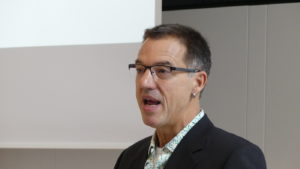 The problem of how and where to dispose nuclear waste poses a challenge to nations all around the globe. In September, FUB’s Environmental Policy Research Center and the research platform ENTRIA (the acronym stands in German for: Disposal Options for Radioactive Residues: Interdisciplinary Analyses and Development of Evaluation Principles) invite to a conference addressing this problem. Within keynote lectures, consecutive panels, roundtables and a study trip, international speakers and participants will exchange their views on the complex task of governing nuclear waste. (You can find the complete program here.)
The problem of how and where to dispose nuclear waste poses a challenge to nations all around the globe. In September, FUB’s Environmental Policy Research Center and the research platform ENTRIA (the acronym stands in German for: Disposal Options for Radioactive Residues: Interdisciplinary Analyses and Development of Evaluation Principles) invite to a conference addressing this problem. Within keynote lectures, consecutive panels, roundtables and a study trip, international speakers and participants will exchange their views on the complex task of governing nuclear waste. (You can find the complete program here.)
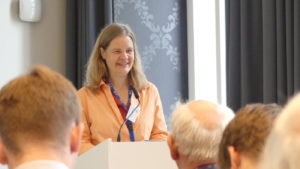 Welcome and introduction (Miranda Schreurs and Achim Brunnengräben)
Welcome and introduction (Miranda Schreurs and Achim Brunnengräben)
Historical paths and legacies, I. The big picture, Chair: Miranda Schreurs (FFU, Berlin)
- Technical democracy and nuclear waste – On the possibilities for democratic decision making in governing nuclear waste, Yannick Barthe (CNRS/EHESS, Paris), Abstract
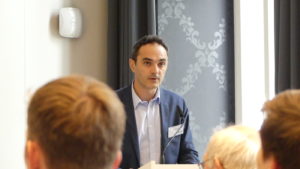 While it is commonly agreed upon that technical choices are not politically neutral, their true political properties are rarely examined in a precise way. To determine how democratic these choices are, most research focuses on the forums of participation that technical policies put in place, as if the effectiveness of such forums could be considered independently from the questions up for debate. Using the case of nuclear waste management, we would like to propose a different approach: a sociological study of the political properties of technical solutions. The aim is to define whether or not the solutions themselves can be considered democratic. By analyzing various nuclear waste management approaches in France, we will distinguish different models of decision-making in scientifically uncertain situations, and evaluate their democratic nature.
While it is commonly agreed upon that technical choices are not politically neutral, their true political properties are rarely examined in a precise way. To determine how democratic these choices are, most research focuses on the forums of participation that technical policies put in place, as if the effectiveness of such forums could be considered independently from the questions up for debate. Using the case of nuclear waste management, we would like to propose a different approach: a sociological study of the political properties of technical solutions. The aim is to define whether or not the solutions themselves can be considered democratic. By analyzing various nuclear waste management approaches in France, we will distinguish different models of decision-making in scientifically uncertain situations, and evaluate their democratic nature.
- The Legacy of Nuclear Power and what should be done about it, Andrew Blowers (The Open University, UK), Abstract
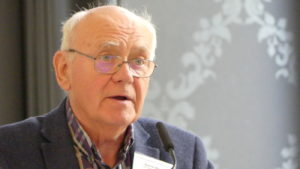 At a critical time of transition for the future of nuclear energy it is important to focus on nuclear’s past and the legacy of waste and clean-up it has left. The legacy of nuclear power is not just a physical issue, it is a moral issue too affecting specific places and future generations. Four communities are chosen to illustrate the problem and what should be done about it. Hanford, in the north west of the USA, is a vast nuclear reservation developed to produce plutonium for the bomb that devastated Nagasaki in 1945 and now engaged in cleaning up the legacy of wastes and contamination left behind when facilities closed at the ending of the Cold War. Sellafield near England’s Lake District is a compact site into which is crammed two-thirds of the country’s radioactivity arising from its military and civil nuclear programmes, a legacy with notorious ponds and silos containing debris that constitutes an ‘intolerable risk’. La Hague on the tip of Normandy in France is still engaged in reprocessing and vitrification of wastes which, in all likelihood, will ultimately be buried in an underground repository at Bure in the east of the country. Conversely, decades of protest concerning Gorleben in Germany where facilities for burial and storage of wastes were started but not completed, has played a practical and symbolic role in bringing down the German nuclear industry.
At a critical time of transition for the future of nuclear energy it is important to focus on nuclear’s past and the legacy of waste and clean-up it has left. The legacy of nuclear power is not just a physical issue, it is a moral issue too affecting specific places and future generations. Four communities are chosen to illustrate the problem and what should be done about it. Hanford, in the north west of the USA, is a vast nuclear reservation developed to produce plutonium for the bomb that devastated Nagasaki in 1945 and now engaged in cleaning up the legacy of wastes and contamination left behind when facilities closed at the ending of the Cold War. Sellafield near England’s Lake District is a compact site into which is crammed two-thirds of the country’s radioactivity arising from its military and civil nuclear programmes, a legacy with notorious ponds and silos containing debris that constitutes an ‘intolerable risk’. La Hague on the tip of Normandy in France is still engaged in reprocessing and vitrification of wastes which, in all likelihood, will ultimately be buried in an underground repository at Bure in the east of the country. Conversely, decades of protest concerning Gorleben in Germany where facilities for burial and storage of wastes were started but not completed, has played a practical and symbolic role in bringing down the German nuclear industry.
These four places represent ‘peripheral communities’ in the sense that they are geographically remote, economically marginal, politically powerless, culturally distinctive and bear the burden of the nuclear legacy. These conditions are both created and reinforced by a process of ‘peripheralisation’ wherebynuclear activities are both pulled towards peripheral communities and pushed away from other communities. The geography of the nuclear industry is thus established and it is in these places that solutions must be found.
The most favoured option is the permanent disposal of the mot highly active wastes in a deep geological repository. The problem is that establishing a process leading to a scientifically robust disposal concept and a socially acceptable site has proved difficult in all but a handful of countries. On technological, political and moral grounds it is preferable to proceed slowly. Technically, time is needed to have confidence in long-term safety of disposal and to consider possible alternatives; politically, it is preferable to ensure a consensus on the best way forward; and morally, since the future is indeterminate, it is right to take a precautionary approach in the interests of future generations.
The problem and the solution then, at least in the foreseeable future, rests in continuing clean-up and the safe management of legacy wastes Given the scale and intractability of the present problem there can be no justification in adding to it by building yet more nuclear facilities creating an unknowable future legacy.
II. Historical paths and legacies, Chair: Jan-Henrik Meyer (University of Copenhagen)
- Everything said and done? The role of the humanities and social sciences in nuclear waste governance, Karena Kalmbach (Technical University Eindhoven), Abstract
Amongst sociologists, research on and the theorization of risk has been a major interest for a long time. Considered an incarnation of a risky technology, the nuclear complex has prominently served as an illustrative example of the arguments researchers made. Ulrich Beck’s Risk Society (1986) and Charles Perrow’s Normal Accidents (1984) were clearly the most prominent examples.
But with regard to research into the interconnections of nuclear technology and social sciences scholarship, many domains still remain untouched. For instance, the field of Public Perception of Risk – a research field that from the beginning has focused its case studies very much on public perceptions of all things nuclear – still lacks its historization. Risk perception, however, has not been the only focus of research carried out by sociologists and political scientists on public debates over nuclear technology. The different frames as well as the individual arguments used in these debates have been investigated as well, in particular in the framework of Public Understanding of Science. Although there is today a practically unmanageable amount of research literature on nuclear risk perception and public understanding of nuclear science, there is barely any knowledge about how this research actually influenced the various stakeholders of the nuclear debate. Did these stakeholders align their strategies with these research findings? In delivering these research results, to what degree did scholars in the field of nuclear risk perception and public understanding of nuclear science actually become themselves actors in the nuclear debate? And is the strong focus on nuclear technology in sociology and social philosophy perhaps in the end a mirror of the central role that research on things nuclear has obtained in the social sciences?
Answering these questions for the specific case of nuclear waste governance – which has been a particular flourishing field for social science research in the last decades (see: Salomon et al 2010) – would open up new perspectives for research into nuclear discourses. What is more, this type of research would allocate a new role to the humanities and socialsciences in nuclear waste governance, as it would allow a critical re-thinking of the role these disciplines have so far played themselves in the nuclear techno-political regime.
- Siting as a (neo)colonial project, David Fig (Transnational Institute, Amsterdam), Abstract
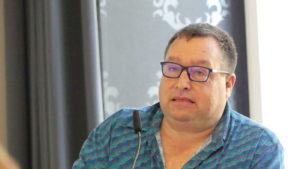 Since the Manhattan project, South Africa ́s links with the global nuclear industry have been profound, starting out as a provider of uranium. From 1965 it commissioned a research reactor, and since 1984 has been producing nuclear electricity. There was a secretive nuclear weapons programme between 1978 and 1990. Together with considerable waste resulting from the mining of uranium, it is surprising that the first policy document on radioactive waste appeared only in 2005. Government was forced to do this because of civil society litigation, yet the policy was issued with almost no public input. The industry has seldom felt accountable to the public, and the regulator has struggled to meet its obligations, given shortages of expert staff and budgets. There is concern about current government plans to add six to eight more reactors to the existing two, given the need to ensure that the institutions governing and regulating the industry are competent and viable. The presentation focuses on how siting issues have revealed something of the country ́s racist and colonial past.
Since the Manhattan project, South Africa ́s links with the global nuclear industry have been profound, starting out as a provider of uranium. From 1965 it commissioned a research reactor, and since 1984 has been producing nuclear electricity. There was a secretive nuclear weapons programme between 1978 and 1990. Together with considerable waste resulting from the mining of uranium, it is surprising that the first policy document on radioactive waste appeared only in 2005. Government was forced to do this because of civil society litigation, yet the policy was issued with almost no public input. The industry has seldom felt accountable to the public, and the regulator has struggled to meet its obligations, given shortages of expert staff and budgets. There is concern about current government plans to add six to eight more reactors to the existing two, given the need to ensure that the institutions governing and regulating the industry are competent and viable. The presentation focuses on how siting issues have revealed something of the country ́s racist and colonial past.
- Experimenting with nuclear waste disposal, Behnam Taebi, Ibo van de Poel and Jan Peter Bergen (Delft University / Harvard Kennedy School), Abstract
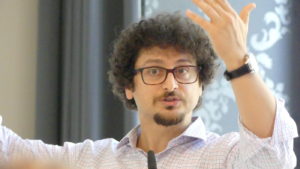 Since 1960s, we have been producing commercial nuclear waste on a large scale worldwide. Yet, serious thinking about potential problems and challenges of nuclear waste started in 1980s and 1990s, culminating in a consensus among nuclear energy producing countries that nuclear waste must be disposed of underground in purpose-built disposal facilities, also known as repositories. Developing repositories proves, however, a daunting challenge and it gives rise to a wealth of technical, societal and ethical issues. Too often has the problem of nuclear waste repositories been seen as a purely technical matter; even after the participatory turn, technical matters are discussed only after the experts have already determined a ‘solution’ for those problems. Such technocratic approach has proven to be unhelpful and a source of public controversy. Moreover, they neglect important societal and ethical issues. In this paper we argue that the development and implementation of nuclear waste repositories should be deliberately organized as a social experiment in order to better understand and address these societal and ethical issues.
Since 1960s, we have been producing commercial nuclear waste on a large scale worldwide. Yet, serious thinking about potential problems and challenges of nuclear waste started in 1980s and 1990s, culminating in a consensus among nuclear energy producing countries that nuclear waste must be disposed of underground in purpose-built disposal facilities, also known as repositories. Developing repositories proves, however, a daunting challenge and it gives rise to a wealth of technical, societal and ethical issues. Too often has the problem of nuclear waste repositories been seen as a purely technical matter; even after the participatory turn, technical matters are discussed only after the experts have already determined a ‘solution’ for those problems. Such technocratic approach has proven to be unhelpful and a source of public controversy. Moreover, they neglect important societal and ethical issues. In this paper we argue that the development and implementation of nuclear waste repositories should be deliberately organized as a social experiment in order to better understand and address these societal and ethical issues.
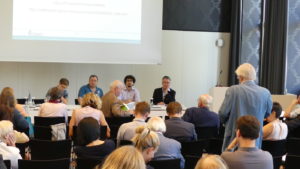 One of the ethical challenges of repositories is the very long-term safety that they supposedly guarantee. However, when we consider the long-term technical and social uncertainties, this long-term safety becomes controversial, or at the least unsubstantiated. In contemplating future safety, there are also intricate dilemmas as to how to consider the interest of shortterm and long-term future generations, and in relation to that how to conceptualize the issuesof retrievably. Reversibility has often been presented in policy-making as a key design criterion, but in practice a stripped down version of this notion as technical retrievability has been implemented. Repositories seem to be essentially locked-in and their developments and are, therefore, irreversible. Finally, nuclear waste disposal is often seen as a national responsibility but there is also increasing attention for multinational collaborations. While multinational repositories are beneficial from a safety, security and economic perspective, they give rise to fundamental justice issues to the effect of which country should accept other countries waste and under what conditions.
One of the ethical challenges of repositories is the very long-term safety that they supposedly guarantee. However, when we consider the long-term technical and social uncertainties, this long-term safety becomes controversial, or at the least unsubstantiated. In contemplating future safety, there are also intricate dilemmas as to how to consider the interest of shortterm and long-term future generations, and in relation to that how to conceptualize the issuesof retrievably. Reversibility has often been presented in policy-making as a key design criterion, but in practice a stripped down version of this notion as technical retrievability has been implemented. Repositories seem to be essentially locked-in and their developments and are, therefore, irreversible. Finally, nuclear waste disposal is often seen as a national responsibility but there is also increasing attention for multinational collaborations. While multinational repositories are beneficial from a safety, security and economic perspective, they give rise to fundamental justice issues to the effect of which country should accept other countries waste and under what conditions.
There is a need to understand and address these and other ethical issues associated with nuclear waste repositories. Looking through the lens of social experiment could help us i) recognize and better communicate the technical and social uncertainties, ii) facilitate a better participatory process and democratic decision-making, iii) understand and address the fundamental justice issue, including intergenerational justice, iv) avoid lock-in into geological disposal as the only option and v) allow for regulatory experiments with multinational repositories. In sum, organizing nuclear waste management as a deliberate social experiment would allow for a process and outcome that has a higher likelihood of counting on social acceptance, while at the same time being more ethically acceptable. Scientific uncertainties and political maneuvering –
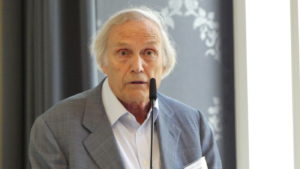 III. National specificities of a global problem, Chair: Eckard Rehbinder (Goethe University, Frankfurt a.M.)
III. National specificities of a global problem, Chair: Eckard Rehbinder (Goethe University, Frankfurt a.M.)
- The case of Yucca Mountain, Allison Macfarlane (George Washington University, Washington), Abstract
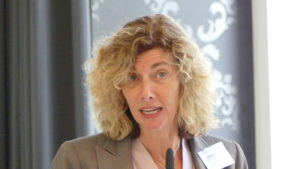 The United States has the longest history of any country in dealing with nuclear waste. In 1957, the National Academy of Sciences considered the problem of radioactive byproducts of nuclear weapons production and recommended disposal in a deep underground repository, preferably salt. In the intervening years, a number of countries have amassed experience with nuclear waste disposal. Many have found their search for a solution to nuclear waste to be iterative: they follow a path to a solution, only to be faced by technical or political problems with that particular solution, so they abandon it, and begin along a new path. The U.S. has already iterated a number of times and is in the process of doing so again. In the 1970s, the US considered sites in Lyons, Kansas, and later moved on to Yucca Mountain, Nevada in the late 1980s, after amending new legislation.
The United States has the longest history of any country in dealing with nuclear waste. In 1957, the National Academy of Sciences considered the problem of radioactive byproducts of nuclear weapons production and recommended disposal in a deep underground repository, preferably salt. In the intervening years, a number of countries have amassed experience with nuclear waste disposal. Many have found their search for a solution to nuclear waste to be iterative: they follow a path to a solution, only to be faced by technical or political problems with that particular solution, so they abandon it, and begin along a new path. The U.S. has already iterated a number of times and is in the process of doing so again. In the 1970s, the US considered sites in Lyons, Kansas, and later moved on to Yucca Mountain, Nevada in the late 1980s, after amending new legislation.
The situation in 2010 reached a stalemate, with the Obama administration rejecting the Yucca Mountain site, but the House of Representatives still supporting it. It remains to be seen what the results of the 2016 election will bring to the debate. The U.S. is also the only country operating a deep geologic repository: the Waste Isolation Pilot Project in southeastern New Mexico for the disposal of plutonium-contaminated equipment from the nuclear weapons complex. The WIPP story stands in stark contrast to that of Yucca Mountain – the former a “success,” the latter so far a failure. In part, the story of Yucca Mountain is that of a patronizing process: the federal government made the site selection, imposed it on the states, in part on the basis of technical considerations, but had to keep altering its story about the technical issues as new discoveries threatened to underminethe “scientifically sound” basis for site selection.
The site selection and the process to determine its suitability are based solely on the results of a probabilistic risk assessment (PRA). In contrast to most other countries, the U.S. alone relied on the outcomes of this massive “computer model” to determine the suitability of the site. Other countries use PRA over the short-term – modeling a few thousand years into the future at most. The United States’ PRA, termed, interestingly, Total System Performance Assessment [emphasis added], covered up to million years. The way that the U.S. has dealt with the risks associated with geologic disposal of waste are closely related to its adherence to cost-benefit analysis and its rejection of the precautionary principle.
- The Elephant in the Room – The role of Gorleben in the German nuclear waste debate, Anselm Tiggemann (Bundestag, Germany), Abstract
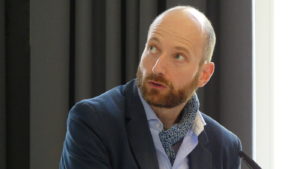 When talking about nuclear waste disposal or nuclear energy in Germany, the first thing that comes to mind is Gorleben – a little village near the border of the former GDR. On the 22nd of February1977, Prime Minister Ernst Albrecht spoke of Gorleben as the site for a “centre” which combines final storage facility with the world’s largest reprocessing plant.
When talking about nuclear waste disposal or nuclear energy in Germany, the first thing that comes to mind is Gorleben – a little village near the border of the former GDR. On the 22nd of February1977, Prime Minister Ernst Albrecht spoke of Gorleben as the site for a “centre” which combines final storage facility with the world’s largest reprocessing plant.
Nowadays, Gorleben represents three things: the protest movement against nuclear energy and waste disposal, the technical concept of closing the nuclear fuel cycle in Germany and German nuclear policy. Gorleben is a focal point for local, regional and nationwide issues of nuclear developments. The article tries to explain the developments from the seventies until today. It begins with the siting process in 1976/77 and ends with the actual approach of siting a repository for nuclear waste disposal in Germany.
Over the past forty years German nuclear waste policy has changed several times, but the decision for Gorleben has not. However, the protests against it never disappeared. The current approach questions the Gorleben decision. The goal is to find a place for a German nuclear waste disposal repository. It is essential to not only find an appropriate place but to enable a transparent process accepted by the public.
- Becoming the role model? Sweden’s quest for a nuclear spent fuel repository, Johan Swahn (MKG – Swedish NGO Office for Waste Review), Abstract
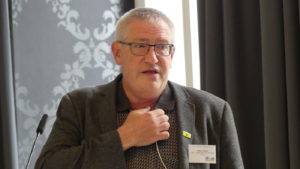 Sweden is often seen as a role model for radioactive waste management (RWM). Already in the 1970s efforts were undertaken to develop a method final disposal of spent fuel. In the 1980s legislation was implemented to establish a financing system for RWM and to put the responsibility for R&D and implementation of storage and disposal facilities on the nuclear industry. Sweden has a final repository for short-lived operational radioactive waste, a centralised storage facility for spent fuel and a seabased transportation system. Although there have been setbacks, the Swedish nuclear industry has carried out a successful siting process for a final repository for spent nuclear fuel. There is an on-goinglicensing review for a repository for spent fuel and Sweden may become one of the first countries in the world to operate such a facility.
Sweden is often seen as a role model for radioactive waste management (RWM). Already in the 1970s efforts were undertaken to develop a method final disposal of spent fuel. In the 1980s legislation was implemented to establish a financing system for RWM and to put the responsibility for R&D and implementation of storage and disposal facilities on the nuclear industry. Sweden has a final repository for short-lived operational radioactive waste, a centralised storage facility for spent fuel and a seabased transportation system. Although there have been setbacks, the Swedish nuclear industry has carried out a successful siting process for a final repository for spent nuclear fuel. There is an on-goinglicensing review for a repository for spent fuel and Sweden may become one of the first countries in the world to operate such a facility.
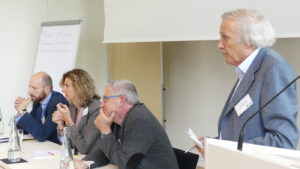 While the Swedish case for RWM looks like a success story, in the last ten years some cracks in the façade have appeared. It now looks like there is a definite risk that there will be a long-term lack of funding for final repositories and the decommissioning of nuclear facilities. The method chosen for disposal of spent fuel is under severe scientific criticism. And it is questioned whether a proposed expansion of the repository for short-lived waste to take care of decommissioning waste is in compliance with modern Swedish environmental legislation. Why has this situation arisen and how is the Swedish RWM governance coping with these challenges?
While the Swedish case for RWM looks like a success story, in the last ten years some cracks in the façade have appeared. It now looks like there is a definite risk that there will be a long-term lack of funding for final repositories and the decommissioning of nuclear facilities. The method chosen for disposal of spent fuel is under severe scientific criticism. And it is questioned whether a proposed expansion of the repository for short-lived waste to take care of decommissioning waste is in compliance with modern Swedish environmental legislation. Why has this situation arisen and how is the Swedish RWM governance coping with these challenges?
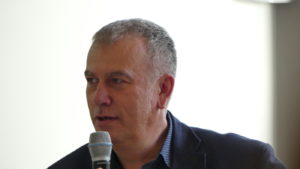 IV. Dealing with conflicts (Part I): Stakeholder-Dialogue and Mediation, Chair: Peter Hocke (ITAS, Karlsruhe)
IV. Dealing with conflicts (Part I): Stakeholder-Dialogue and Mediation, Chair: Peter Hocke (ITAS, Karlsruhe)
- Consensus-oriented stakeholder dialogue: Experiences from Geesthacht, Silke Freitag (Mediator „HZG in dialogue“, Geesthacht), Abstract
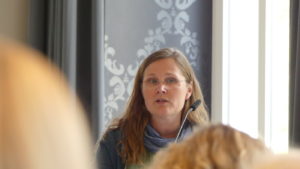 Geesthacht has two nuclear facilities: the nuclear-power-plant “Krümmel” and the nuclear-researchcenter of Helmholtz-Zentrum-Geesthacht (HZG), which was shut-down in 2010. There has been a history of conflict regarding nuclear power as well as nuclear waste. Moreover, the rate of leukemia around Geesthacht is the highest worldwide– and no one ever found an answer to the question: why?
Geesthacht has two nuclear facilities: the nuclear-power-plant “Krümmel” and the nuclear-researchcenter of Helmholtz-Zentrum-Geesthacht (HZG), which was shut-down in 2010. There has been a history of conflict regarding nuclear power as well as nuclear waste. Moreover, the rate of leukemia around Geesthacht is the highest worldwide– and no one ever found an answer to the question: why?
The climate in Geesthacht was basically one of mistrust when HZG decided to start the dialogue in 2012. HZG wanted to dismantle the nuclear research reactor involving their neighbors, local politicians and environmental groups. Whoever wanted to take part in the dialogue was welcome to do so. It was open to everyone.
Some environmental groups rejected participating in this dialogue because of bad experiences with round tables in the past. Instead of calling them “cowards”, “irresponsible” or “destructive” and playing the “blaming game”, HZG believed that these groups had their reasons for saying “no” to the dialogue. HZG made it very clear that they would really appreciate these individuals and their organizations participating in the dialogue. They really wanted to understand why the environmental groups rejected the dialogue and so they asked a very simply question “What would need to be in place for you to participate?”.
One answer was: “a facilitator we trust”. HZG decided to ask an experienced facilitator, who is a lecturer for mediation at the University of Hamburg and most importantly, known to be involved in the anti-nuclear-power movement – not only in protests but also in direct actions.
The process started with a pre-dialogue-period in October 2012 and meeting after meeting more people joined in. The dialogue-group took the time they needed until November 2013 when they finally published their ground rules for “HZG in dialogue”. This framework includes agreements on choosing the facilitators, inviting external experts, setting the agenda and dealing with the media – basically: making decisions together without majorities and minorities yet consensus-orientated within the legal framework.
In the past three years the dialogue group has been discussing many topics and has carefully considered alternative options and possible solutions. Experts were only invited to provide information once everyone trusted them to be independent and safety-orientated.Transparency is important for the process – as well as confidentiality. “HZG in dialogue” therefore decided to disinvite the press during the dialogue-meetings and agreed on publishing press releases together as well as posting every expert’s report on the webpage.
- Stakeholder dialogue in the UK’s CoRWM. Gordon MacKerron (SPRU, University of Sussex), Abstract
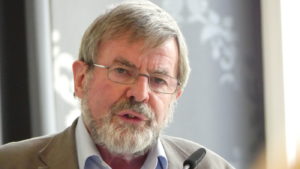 CoRWM’s was given two aims: to protect the public and the environment, and to ‘inspire public confidence’ – where the latter explicitly required intensive dialogue with public and stakeholders. In practice, establishing and elaborating a deliberative form of dialogue became the main activity of the Committee. CoRWM made a clear distinction between stakeholders (those with a pre-existing interest of any kind in waste) and the wider public (those with no strong views and in most cases little knowledge).
CoRWM’s was given two aims: to protect the public and the environment, and to ‘inspire public confidence’ – where the latter explicitly required intensive dialogue with public and stakeholders. In practice, establishing and elaborating a deliberative form of dialogue became the main activity of the Committee. CoRWM made a clear distinction between stakeholders (those with a pre-existing interest of any kind in waste) and the wider public (those with no strong views and in most cases little knowledge).
CoRWM pursued deliberative engagement from the very start of its work, asking, in a first round of engagement, how stakeholders thought the Committee should conduct its work. Such early engagement, most members believed, was critical to credibility. This led to internal dispute in the Committee, where some members believed that there was a zero-sum game if there was pursuit both of good science (the ‘protection’ aim) and intensive dialogue. In other words, dialogue, pursued from the earliest stages, would dilute or contradict science. There might have been such a risk if CoRWM had believed its mission was simply to reflect uninformed public opinion or self-interested stakeholder positions, but it always asserted that it would not act as a simple conduit, but rather make its own judgments, once fully informed by wide-ranging deliberation.
CoRWM developed three further rounds of engagement with both the public and stakeholders, using a wide variety of approaches. With the public, tools used included a large schools project, a major set of Citizens’ Panels and on-line dialogues. With stakeholders, approaches included a national stakeholder dialogue and nuclear site round-tables, as well as a series of bilateral dialogues with major stakeholders. In all public and stakeholder engagements, the process was repeated several times at major stages in the Committee’s process, and – somewhat to the Committee’s surprise – no ‘stakeholder fatigue’ seemed evident.
The intensive and highly deliberative engagements with the public and stakeholders were widely regarded as successful, and established good practice. Reasons for this success included: (a) the Committee conducted all its activities in public and was unusually transparent; (b) CoRWM’s membership was drawn from a wide variety of backgrounds (e.g. proand anti-nuclear), and this meant that many stakeholders were ‘constituencies’ of one or more members; (c) virtually all engagement events were attended by CoRWM members, so that they could hear views and participate directly in dialogue (there was little mediation via consultants) (d) where the Committee disagreed with views it heard, it always explained why this was so.
- A Global Disposal Site? Perspectives on Radioactive Waste and Spent Nuclear Fuel Management in Russia, Felix Jaitner (University of Vienna), Abstract
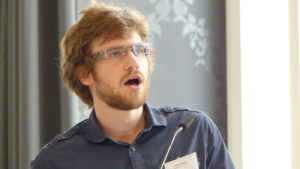 Russia‘s international policy and economic interests are shaped by its major role as an energy producer and exporter and its high domestic energy consumption. On an international level the Russian government strives to secure the dominant position of conventional energy sources (oil, gas, coal and nuclear energy). In this context the assigned role to the nuclear complex is crucial.
Russia‘s international policy and economic interests are shaped by its major role as an energy producer and exporter and its high domestic energy consumption. On an international level the Russian government strives to secure the dominant position of conventional energy sources (oil, gas, coal and nuclear energy). In this context the assigned role to the nuclear complex is crucial.
In the past ten years, the Russian nuclear complex has undergone a profound reorganisation process targeting both legislation and the institutional framework. Despite improvement in various fields (infrastructural development, unified regulatory base) the outcome of the reform is ambivalent with regard to democratic control of the nuclear complex or the implementation of ecological standards. The state corporation Rosatom assumes tasks previously performed by the Russian state both in the field of civil and military use of atomic energy. Being accountable only to the president of the Russian Federation neither the federal parliament nor regional state authorities or other public institutions can effectively control the companies ́ actions. In fact, the reform resulted in a new interlock between state and nuclear complex based on the logic of a market economy. The overarching goal of this process is to secure the significant role of nuclear energy on the domestic market and enable the Rosatom ́s international expansion.
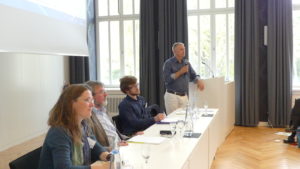 Against this background, radioactive waste management is regarded as a decisive factor determining the future success of the nuclear complex. The manifold approach (deep-well storage, reprocessing of spent nuclear fuel, closed nuclear circle) shall prove the superiority and sustainability of the nuclear industry over other energy sources. The foundation of an international fuel bank of low-enriched uranium to assure fuel supply to countries without their own fuel cycle facilities or repatriation of spent fuel for Russian-built nuclear power plants (Belarus, Hungary, Vietnam) point into the same direction.
Against this background, radioactive waste management is regarded as a decisive factor determining the future success of the nuclear complex. The manifold approach (deep-well storage, reprocessing of spent nuclear fuel, closed nuclear circle) shall prove the superiority and sustainability of the nuclear industry over other energy sources. The foundation of an international fuel bank of low-enriched uranium to assure fuel supply to countries without their own fuel cycle facilities or repatriation of spent fuel for Russian-built nuclear power plants (Belarus, Hungary, Vietnam) point into the same direction.
A guiding principle of radioactive waste management is the valorisation of radioactive waste (tariffsystem) and spent nuclear fuel (reprocessing, fuel bank). Despite the efforts, the Russian nuclear complex is not able to dispose radioactive waste safely. Tremendous implications for human beings and the environment remain.
V. Dealing with conflicts (Part II): Acceptance, Voluntarism and Compensation, Chair: Maria Rosaria Di Nucci (FFU, Berlin)
- The catch 22 of nuclear communities: How to create room for technical democracy if opting out is not an option?, Anne Bergmans (University of Antwerp), Abstract
This contribution focusses on the position of existing nuclear communities in nuclear waste management policy.
Public and stakeholder engagement with nuclear waste management policy mainly comes to the fore with regard to the question of siting facilities for storage and particularly disposal. In 1991 Audry Armour introduced voluntary siting as a strategy for dealing with siting controversies, using the Canadian siting process for a low-level radioactive waste management facility as a case study. Since then, several nuclear waste management programmes have taken the route of voluntary siting or variations thereof, particularly in relation to waste disposal facilities. The latest variation of the concept being the consent-based siting processes as proposed in the US.
With the notion of voluntary or consent-based siting comes the idea of having an alternative, of being able, as a community, to opt in or out; or as the US – Nuclear Waste Technical Review Board puts it: “Communities asked to consent to the choice of site generally are concerned about when a right of withdrawal can be exercised because disagreements between the implementer and the community may arise over whether any surprises encountered can be worked around or whether they automatically disqualify a site.” (NWTRB 2015: 4). Whether referred to as “final disposal” or “long term management” (LTM) facilities, the purpose is to find a permanent resting place for this particular waste type. In focussing on that final destiny and possible opposition rising in the concerned communities, attention is seldom payed to those communities hosting the waste in one way or another already today.
That way the siting of future facilities comes to some extent detached from the reality of location today. Unless nuclear communities with waste storage facilities come in the picture as potential hosts for disposal facilities, they are hardly granted a voice in the siting decision process – whether that be consent-based or not. The outcome of such a process will nevertheless have a strong impact on those communities. Therefore this contribution explores what roles and options there are for such communities if we consider them as ‘end users’ of the disposal or LTM technology.
- The Experience of the Swiss Negotiated Approach, Martin Steinebrunner (Deutsche Koordinationsstelle Schweizer Tiefenlager, DKST). Abstract
After a failed attempt to secure the Wellenberg facility site for the storage of low and medium-level radioactive waste due to strong opposition from the local citizens, Switzerland decided to follow a fundamentally new approach. A first step was taken by revising the national nuclear power legislation; the Wellenberg experience resulted in abolishing the cantons’ right to veto. At the same time the search for possible disposal sites (storage of high-level waste, of low and medium-level waste and combined storage) begun under the Sachplan geologische Tiefenlager (Sectoral Plan for geological underground storage facilities) (A Sachplan is a national zoning tool in Switzerland, used to define the roles, areas of expertise and interaction of the different administrative levels and political entities involved; in this case, in the search process for a waste disposal site). Point of departure for the search was a ‘blank map’ of Switzerland with highest priority on finding a location which would meet the criteria of human and environmental safety at best. The Sachplan concept took into consideration recommendations of the German Commission AkEnd, but also reflected international experiences, in particular of Belgium, Sweden and Finland. In order to avoid repeating the mistakes which led to the failure in Wellenberg, the search has been improved by a public participatory process. The Sachplan makes the local townships central to the participatory process: They are, on the one hand, the most directly affected by the negative consequences of the site search and its authorization, construction and operation. At the same time,they are, as politically sovereign partners of the national government, responsible for implementing and negotiating of public participation at the regional level.
Who is affected (‘betroffen’) and should therefore have a right to membership in a Regionalkonferenz (regional forum)? According to which criteria are the regional areas to be defined, which are then represented in the Regionalkonferenzen? These crucial questions were to be clarified prior to and during the phase in which the participatory process was being established. The Swiss Federal Office of Energy (SFOE) provided guidelines for this phase. Ultimately, however, the political players of the region ended up haggling over membership in the ‘regional forums’. In the meantime, the regional site locations (Standortregionen) were identified according to the following set of categories:
1. Standortgemeinden (site communities)
2. Perimetergemeinden (perimeter communities) = additional Swiss townships to be taken into consideration as possible locations for a surface waste disposal facility
3. weitere betroffene Gemeinden (additional affected communities) = those townships who can prove their claim to being affected on the basis of exemplary criteria stipulated by the SFOE. Only townships bordering on a site or perimeter community, however, are eligible claimants.
One can see the high importance attached to a township’s municipal territory being concretely affected by the construction of a facility in order to fulfill the criteria of ‘Betroffenheit’. When a municipal territory and a facility site planning zone overlapped, then the community’s membership in the participatory process was legitimized. In contrast, public perception of risks and of potential, assumed or feared effects of the storage facilities only played a marginal role in setting up the ‘regional forums’. Most conflicts have to do with these unrecognized claims of being affected.
There are members of the Swiss project who are aware of these difficulties and who have advocated improvements within the framework of the participatory process to ensure that the activities of the ‘regional forums’ will continue in the upcoming Phase 3. Our experience with the Swiss search for deep geological waste disposal sites clearly shows how urgent it is to identify objective and transparent criteria for the participatory process and for the role that participation should be taking up in an open dialogue. As a country located in the heart of Europe, the obvious conclusion should be: proceed as if borders did not exist.
- The evolution of nuclear waste governance in the UK: exploring the broader democratic context, Philip Johnstone (SPRU, University of Sussex), Abstract
This paper discusses decision-making on nuclear waste in the UK from the 1976 to the present. The governance of nuclear waste is considered in terms of institutional reforms and wider political conditions including developments in civilian energy policy, and how decision making in different ‘locations’ of the policy landscape may influence the specific policy field of nuclear waste. This looks at three eras of decision making in the UK in terms of the wider changes to the governance of technology in the UK, including: the adversarial context of the 1980s and 1990s, the participatory turn from 1997, and the streamlining period from 2008 onwards. Looking at these three periods, changes in nuclear waste policy is considered alongside developments in civilian energy policy and wider institutional reforms and transformations in UK political culture. Both the Spatial dynamics of these changes, as well as temporal dynamics in terms of ‘speeding up and slowing down’ of policy are considered. It isargued that understandings of these broader changes and decisions taken elsewhere are an important consideration, due to issues around ‘institutional memory’ and ‘institutional learning’, as well as the ways that the problem articulation being considered within the specific field of nuclear waste often faces increased levels of uncertainty, or is potentially reframed, depending on policy goals and reforms being pursued elsewhere.
- Voluntarism and compensation in French and Finnish nuclear waste governance strategies: A comparison, Markku Lehtonen (EHESS, Paris), Abstract
There is a broad consensus among the nuclear waste management community – at least on the level of official discourse – about the need to build the siting process upon the principle of voluntary consent by the host community. Voluntarism is on the one hand often seen as an essential precondition for the necessary social trust amongst the local stakeholders, but trust can likewise be a resource – a precondition for voluntarism. In order to mitigate potential harmful effects and facilitate site construction, to compensate for damage (e.g. distributional effects), and to incite communities to volunteer, governments in various countries have designed specific community benefit packages, sometimes in collaboration with the potential host community.
This paper compares the dynamics of voluntarism and community benefit packages in the Finnish and French nuclear waste management policies, and highlights the challenges associated with this such approaches. While among the frontrunners in terms of the state of advancement in their plans of implementing high-level radioactive waste disposal projects, these two countries differ sharply in terms of the local dynamics shaping the disposal projects. In Finland, the host community is a relatively wealthy “nuclear community”, whereas the French project is planned in a small, peripheral village in a region that hosts no major nuclear installations, and has been in economic decline since several decades. Also the form of the compensation differs between Finland and France: in Finland, “community benefits” are a matter to be negotiated between the host municipality and the waste management company, whereas in France, “community packages” are mandatory by law. While recognising the importance of the design of compensation measures (e.g. participation, distributional equity, amount of funding), the paper highlights the importance of the local and national context in shaping the consequences of compensation packages. Key factors to consider include the “peripherality”, local self-image and identity, socio-economic wellbeing, role of nuclear industry, and project history.
- Between Science and Politics: The Role of Commissions in Nuclear Waste Governance. Gordon MacKerron (SPRU, University of Sussex), Abstract
The UK has used a variety of approaches to the issue of managing radioactive waste. Two of the most influential have been the use of committees or commissions, visibly somewhat independent of Government, to advise on ways forward. These, separated by 30 years, were the 6 th report of theRoyal Commission on Environmental Pollution (RCEP,1976) and the Committee on Radioactive Waste Management (main report published in 2006). Both of these bodies were influential politically, largely because they took relatively radical but credible approaches to social and political, as well as scientific issues.
The RCEP, ahead of its time in 1976, explicitly argued that risks to be considered in radwaste management, had to be extended to social and political dimensions, rather than being confined, as hitherto, to scientific issues. It advocated the opening up of decision-making to public scrutiny, but argued that debate informing this should be limited this experts. It developed the famous ‘Flowers criterion’ that there should be no commitment to a large new programme of nuclear power without assurance that the waste problem could be satisfactorily resolved. This was subsequently largely ignored, but the 1976 report led to a new advisory system being set up and regulation of waste being transferred from the Government department advocating nuclear power to the relatively new environmental department.
CoRWM was established as independent of Government, and had much wider-ranging membership than narrowly scientific, including social scientists, experts in public engagement and a founder member of Greenpeace as well as nuclear insiders. All work was done in public, with very heavy emphasis on public and stakeholder engagement and deliberative dialogue. It paid relatively little attention to scientific issues, on which there was already a broad scientific consensus, and aimed primarily to ‘inspire public confidence’ (a phrase from its terms of reference). While its terms of reference were to advise on the best technological way forward, it also developed a political ‘roadmap’ for Government. The centrepiece and most important recommendation was their adoption of the ‘Scandinavian’ model of decision-making on radwaste siting, which insisted that communities had to volunteer and be given a right of withdrawal until relatively late stages of implementation. Government immediately endorsed the ‘voluntarism’ model and has pursued it, without success as yet, since 2007.

